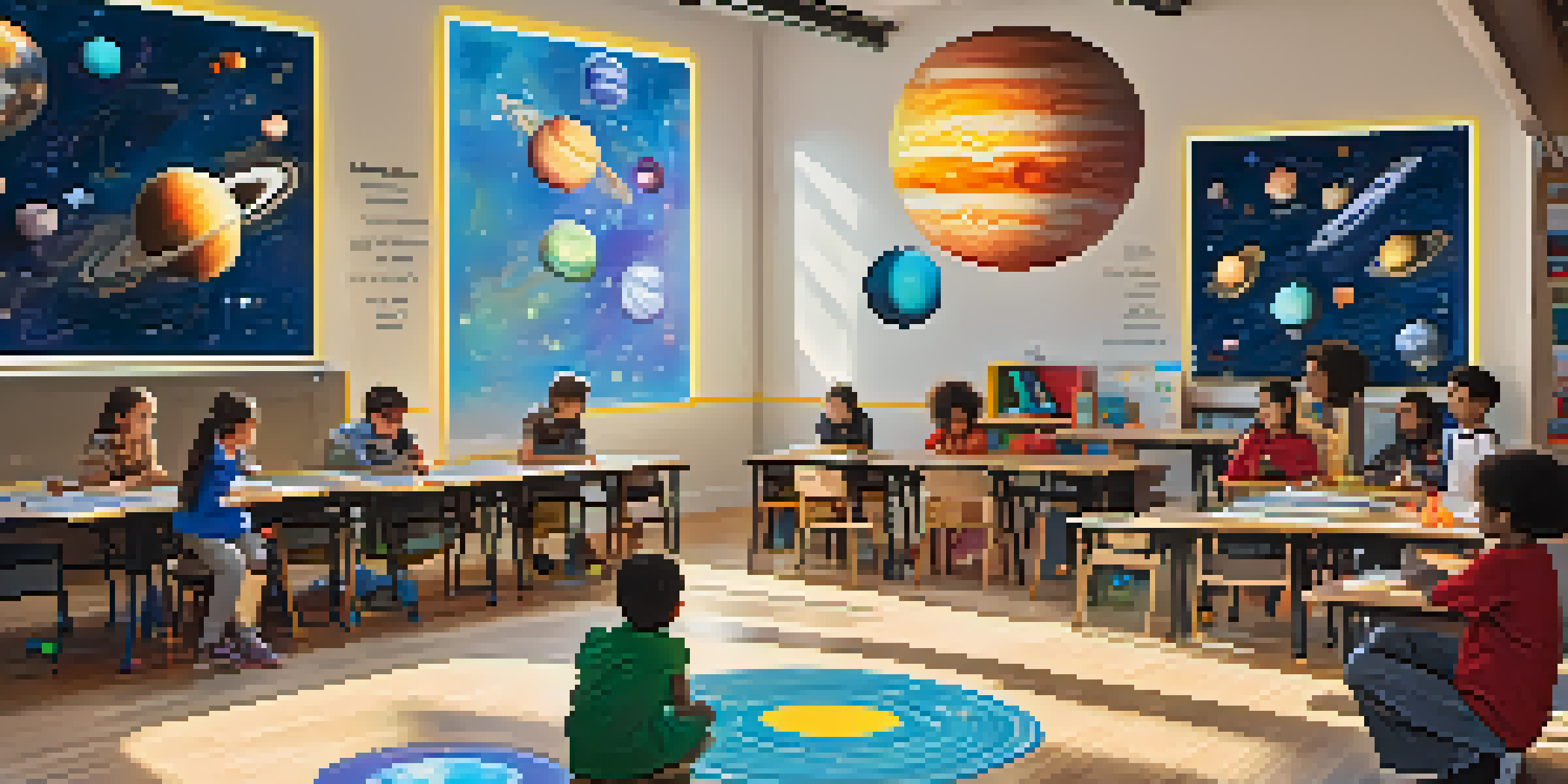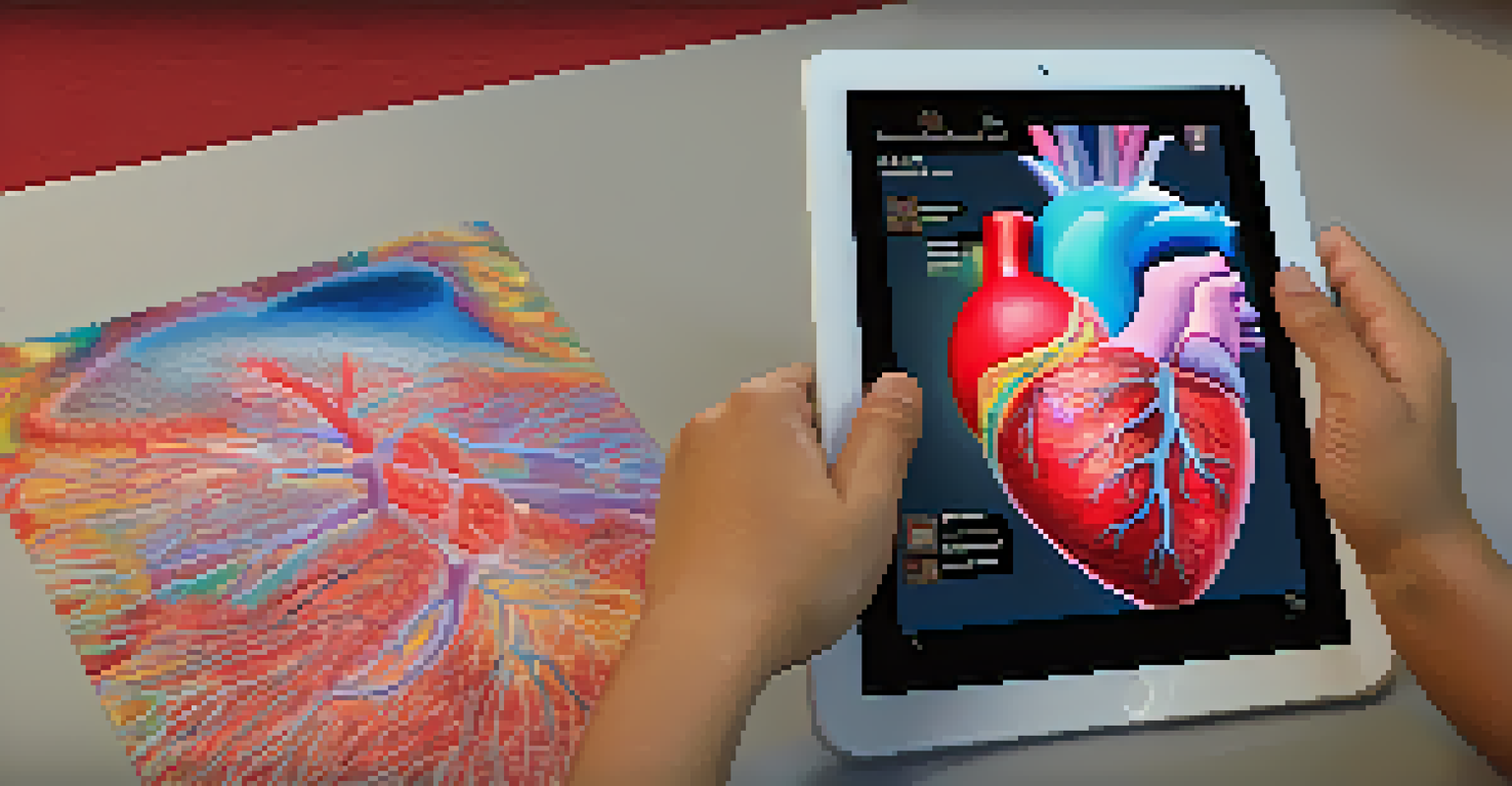Engaging Students with AR: Strategies for Educators

Understanding Augmented Reality in Education
Augmented Reality (AR) is a technology that overlays digital information onto the real world, creating an interactive experience. Imagine looking through your phone and seeing a dinosaur roaming in your classroom! This innovative approach can transform traditional learning into a captivating adventure, making lessons more memorable.
The great aim of education is not knowledge but action.
With AR, students can visualize complex concepts, such as anatomy or astronomy, in a way that textbooks simply can't provide. For instance, by pointing a device at a picture of the solar system, students could see planets in 3D and even interact with them. This hands-on experience can significantly enhance their understanding and retention.
As educators, it's vital to recognize the potential of AR to cater to different learning styles. Some students thrive on visual stimuli, while others benefit from kinesthetic learning. By incorporating AR into your lessons, you can engage a broader range of learners and foster a more inclusive classroom environment.
Choosing the Right AR Tools and Applications
Selecting the appropriate AR tools and applications can make all the difference in your teaching strategy. There are numerous AR platforms available, each offering unique features tailored to various subjects and age groups. Popular options like Google Expeditions and Merge Cube allow educators to create immersive experiences that align with their curriculum.

When choosing an AR tool, consider the ease of use for both you and your students. You want something that enhances the learning experience without overwhelming anyone with technical difficulties. Opt for user-friendly applications that require minimal setup and can be easily integrated into your lesson plans.
AR Enhances Student Engagement
Augmented Reality transforms traditional learning by making lessons interactive and memorable.
Don’t forget to look for apps that offer a wide range of content to keep your lessons dynamic. Whether it's virtual field trips to historical sites or interactive science experiments, having diverse resources will keep students engaged and excited about learning.
Integrating AR into Lesson Plans Effectively
Integrating AR into your lesson plans doesn't have to be daunting. Start small by incorporating AR elements into existing lessons. For example, if you're teaching geography, you can use AR to bring maps to life, allowing students to explore different terrains and cultures interactively.
Technology will not replace great teachers, but technology in the hands of great teachers can be transformational.
Another effective strategy is to use AR for project-based learning. Encourage students to create their own AR experiences related to the subject matter, such as designing a virtual museum exhibit about a historical event. This not only deepens their understanding but also fosters creativity and collaboration among peers.
Remember to set clear objectives for each AR activity. Establish what you want your students to learn and how the AR experience will support those goals. By aligning AR tools with learning outcomes, you can ensure that technology serves as a means to enhance education rather than distract from it.
Fostering Collaboration through AR Experiences
One of the most exciting aspects of AR is its ability to foster collaboration among students. By engaging in group activities that utilize AR, students can work together to solve problems, share ideas, and learn from one another. This collaborative environment can enhance social skills and create a sense of community in the classroom.
Consider implementing AR scavenger hunts where students must work in teams to find and interact with virtual objects placed around the classroom or school. This not only encourages teamwork but also adds an element of fun and excitement to the learning process.
Choose User-Friendly AR Tools
Selecting easy-to-use AR applications helps educators integrate technology smoothly into their lesson plans.
Additionally, collaboration can extend beyond the classroom. By connecting with other classrooms or schools using AR technologies, students can share their findings and experiences, broadening their perspectives and global understanding. This interconnectedness can enrich their education and inspire a spirit of inquiry.
Assessing Student Learning with AR Tools
Assessing student learning in an AR-enhanced environment can be both innovative and effective. Traditional assessments often fall short in capturing a student's engagement and understanding. However, AR allows for interactive assessments that can provide real-time feedback and deeper insights into student comprehension.
For instance, using AR, you can create immersive quizzes where students answer questions by interacting with virtual objects. This method not only makes assessment enjoyable but also allows you to gauge their understanding in a dynamic context.
Don't forget to incorporate self-assessment opportunities through AR. Encourage students to reflect on their learning experiences and evaluate their progress. This practice can foster metacognition, helping them become more aware of their learning processes and outcomes.
Creating a Safe and Inclusive AR Learning Environment
While AR opens up exciting possibilities, it's essential to create a safe and inclusive learning environment for all students. Start by establishing clear guidelines on how to use AR technology responsibly, ensuring that everyone feels comfortable and respected during AR activities. This is crucial for fostering a positive classroom culture.
Consider the diverse needs of your students when planning AR activities. Some students may require additional support or adaptations to fully engage with the technology. By being mindful of these differences and providing necessary accommodations, you can ensure that all students have equal access to AR resources.
Foster Collaboration with AR
AR activities encourage teamwork and collaboration, enriching students' learning experiences and social skills.
Finally, encourage open communication among students about their experiences with AR. This dialogue can help identify any challenges they may face and promote a supportive atmosphere where everyone feels valued. An inclusive environment not only enhances learning but also builds resilience and confidence among students.
The Future of AR in Education: Embracing Change
As technology continues to evolve, the future of AR in education looks incredibly promising. Educators have the unique opportunity to embrace these advancements and explore new ways to engage students. The integration of AR can transform traditional teaching methods, making learning more interactive, immersive, and effective.
Looking ahead, we can expect to see even more innovative applications of AR in various subjects, from science to literature. Imagine students exploring Shakespeare's plays in a virtual setting or conducting chemistry experiments in an interactive lab through AR. The possibilities are truly endless.

By staying informed about the latest AR trends and continuously experimenting with new tools, educators can lead the charge in shaping the future of learning. Embracing change and innovation will not only enhance student engagement but also prepare them for a world where technology plays an integral role in everyday life.